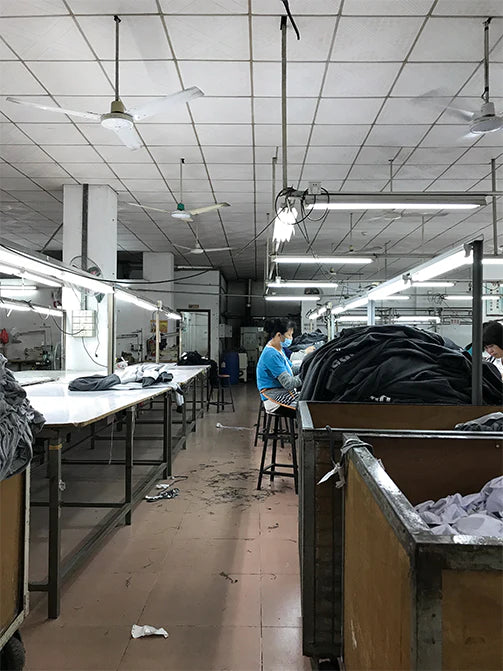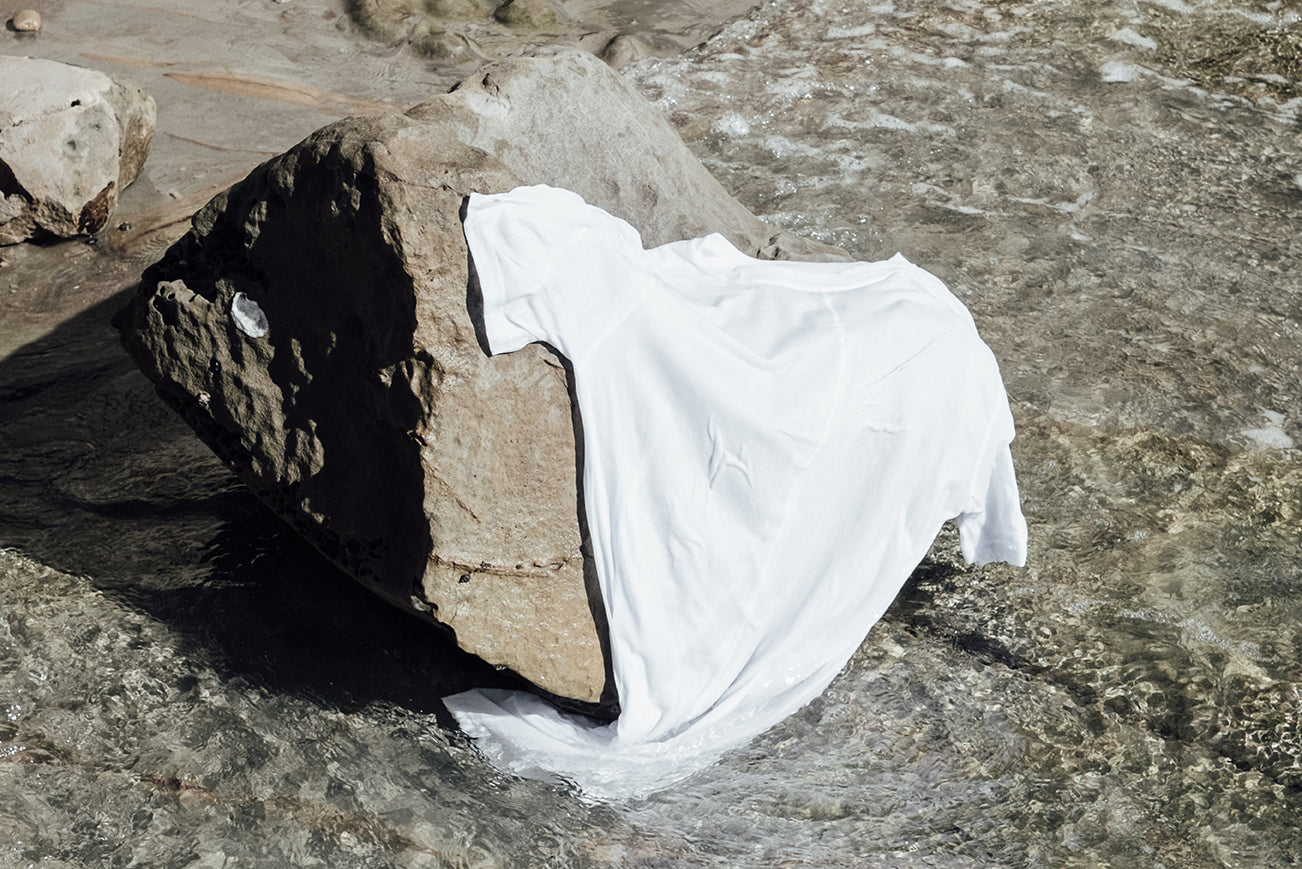-
ABOUT
-
Established in 2010, Commoners began with the aim of making design attainable and quality assured. Adopting a minimalist aesthetic and investing in considered fabrications, our pieces match form with function in the pursuit of longevity. Clean lines, pared-back palettes and uncomplicated silhouettes define our CLASSICS basics and seasonal pieces for both men and women, distinctly developed with a focus on natural materials and treated to feel like your newest old friend.
-
OUR MISSION
Existing in an industry widely recognised as a key contributor to environmental degradation, we recognise our role in this system and our duty of care in creating a better one.
Each day we are making smarter decisions in the way we design, manufacture and deliver our product to you, blending modern designs with thoughtful production to meet today’s wardrobe needs and tomorrow’s environmental challenges.
This process is ongoing, and while we have always placed environmentally-preferred, natural materials at the forefront of our range, we are purposefully exploring new technologies in fabrication, packaging and recycling processes so we can keep doing better.

OUR MAKERS
Commoners' garments are the product of the long-established relationships between our design team, based in the beach-side town of Mount Maunganui, New Zealand, and offshore production partners based in Zhong Shan, People's Republic of China.
Working with three specialist factories, we produce our collections in very small unit runs fully utilising our selected fabric groups – conscious of not over-producing and creating waste. We visit our friends in PRC to ensure our shared standards for quality, craftsmanship and care (for people and planet) are aligned.
GARMENT CARE
COTTON
Caring for 100% cotton clothes is easier than what most people think of. When hand washing is not an option, the delicate cycle on your machine is preferred. The use of cold water is recommended. If you feel you must, then warm water but never hot water unless you intend to have the cotton item to shrink. Also, always turn the item inside out to protect the outer side when washing. When drying on a clothes line outside, keep the cloths turned inside out, this will prevent the sun from fading the fabric.
Our cotton jersey is overdyed in the production process, so it’s only natural for the richness of colour to fade ever so slightly with the first wash. To maintain light colours and keep them bright, it’s a good idea to pre-treat stains in areas such as underarms, necklines, and cuffs.
Wash inside-out
Cold, gentle machine wash
Hang inside out to dry
KNITWEAR
Wools don’t need washing as often as other fibres might, in fact, they will last a lot longer between washes if you don’t. Here are a few things you can do instead:
Air it out – simply hang out your garment laying flat, many types of wool have anti-bacterial properties already in the fibre and will self-clean.
Brush it / de-pill – brushing wools will not only prevent pilling (give it a little extra brush where the garment is most subjected to friction, under arms and the side where you hang your bag) but also releases its natural oils, which rejuvenates the material.
Spot clean – why clean the whole garment if only a small area needs it? When doing this, use only a wool-friendly detergent and as little as possible.
Dry clean: You must only dry clean our woollen and cashmere knitwear. Otherwise follow the above alternative steps.
DO NOT TUMBLE DRY ANY KNITWEAR. No knitted things will enjoy a trip round the tumble dryer. Instead, when drying, lay your woollens flat on a towel to absorb any extra moisture, whilst gently reshaping them (knits can be heavy when wet and that extra weight will pull them out of shape if you dry them over a rail or hanging up).
What about pilling? – Pilling is NOT a sign of a poor quality product – but is in fact the exact opposite. Premium yarns like wool and cashmere are often spun quite differently to lower cost and lower quality synthetic fibres, which is why pilling occurs. They may consist of short staple fibres which must be gently twisted when they’re spun into woollen yarn, in order to preserve the soft feel and light weight. Plus, the more loosely spun a yarn is, the more softer the hand-feel, which allows fibres more opportunity for friction and in turn, pilling.
Pilling doesn't continue to happen forever – it is simply a natural (and very normal) occurrence on a new knitted garment as the loose surface fibres in the twists, which are exposed to friction for the first time, shed during the first wears. After a handful of wears – once all of those fibres have come to the surface through initial use and friction (and after a 'de-bobbling' service!) – pilling will ease over time and occur less and less. We know it's not desirable, but it is part and parcel of owning knitwear.
We advise tidying/maintaining your knitwear with your choice of a pill-removing device, and recommend following our Knitwear Care and Wash Guide.
FLEECE
Caring for 100% cotton clothes is easier than what most people think of. When hand washing is not an option, the delicate cycle on your machine is preferred. The use of cold water is recommended. If you feel you must, then warm water but never hot water unless you intend to have the cotton item to shrink. Also, always turn the item inside out to protect the outer side when washing. When drying on a clothes line outside, keep the cloths turned inside out, this will prevent the sun from fading the fabric.
Our cotton jersey is overdyed in the production process, so it’s only natural for the richness of colour to fade ever so slightly with the first wash. To maintain light colours and keep them bright, it’s a good idea to pre-treat stains in areas such as underarms, necklines, and cuffs.
Wash inside-out
Cold, gentle machine wash
Hang inside out to dry
LINEN
It is a common misconception that linen needs specialist care. This couldn’t be further from the truth, and we want to help you see just how easy it is to care for linen and to keep it looking beautiful for years to come. Made from the fibres of the flax plant, linen has been cultivated and used as a textile for thousands of years, long before the existence of dry cleaners or fancy detergents. In fact, it is such a natural, simple fabric that caring for it is simple too.
How do I wash linen?
Linen becomes softer and more absorbent after each wash, which is great! Wash linen on a cold water cycle. Use the gentle machine cycle and a mild detergent to protect the fibres.
- Wash inside-out
- Cold, gentle machine wash
- Hang inside out to dry
Tip: Don’t overcrowd the washing machine with too many items at once. This can cause twisting or pulling the linen out of shape.




